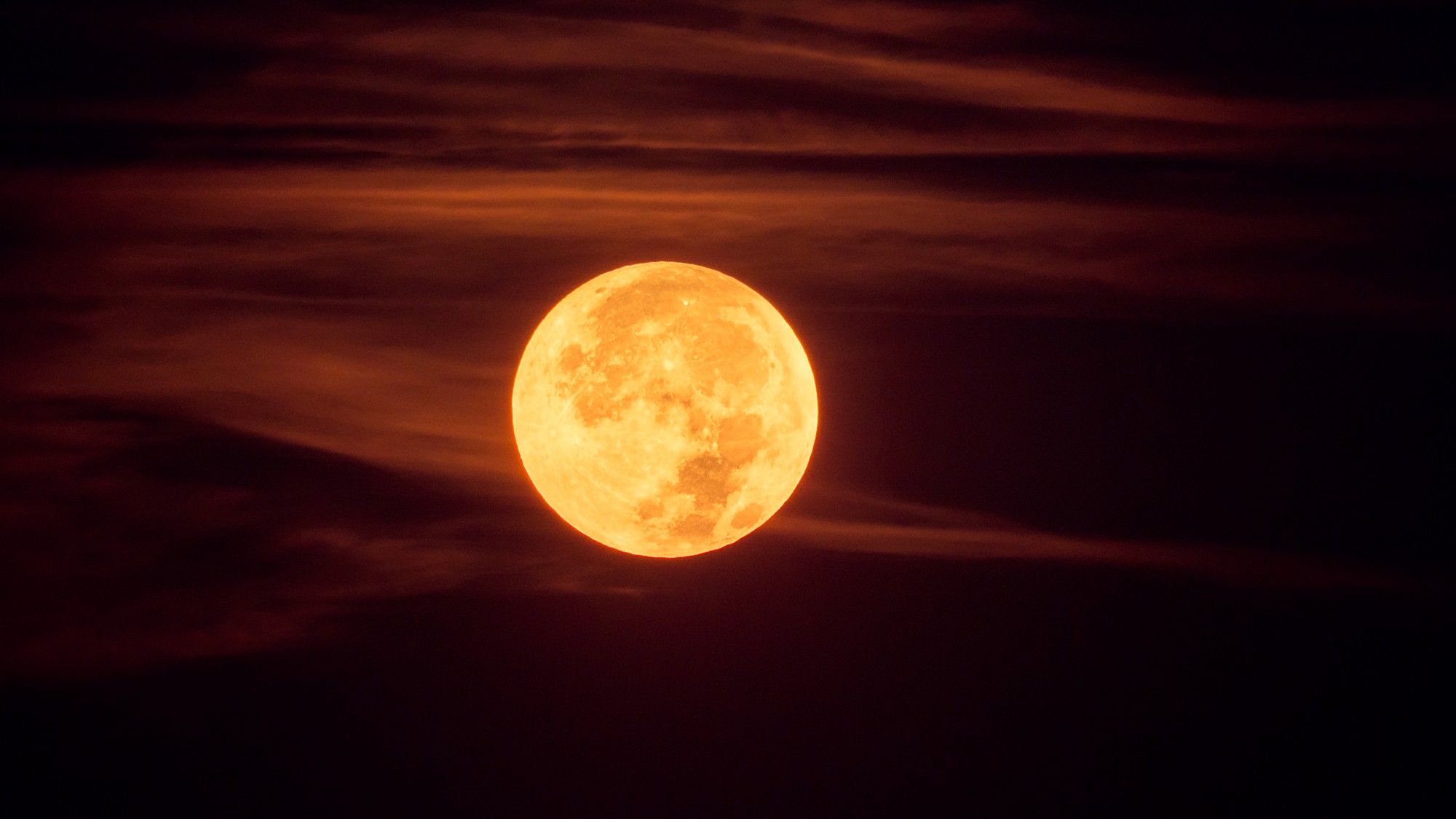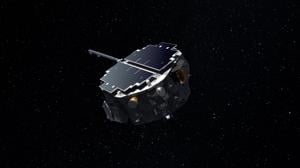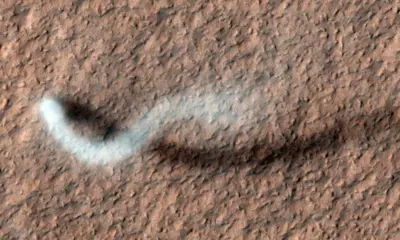Science
New Study Reveals Earth’s Role in Moon’s Unexpected Rusting

Recent research has revealed that the moon is experiencing rust formation, a phenomenon previously thought impossible due to its harsh environmental conditions. A new study suggests that the rust, specifically hematite, is primarily formed from particles originating from Earth’s atmosphere during specific periods in the lunar cycle.
Understanding Lunar Rust
The discovery of hematite on the moon dates back to 2020, during India’s Chandrayaan-1 mission. Scientists were initially perplexed, as rust typically requires both oxygen and water for its formation—elements believed to be scarce on the lunar surface. “It’s very puzzling,” stated Shuai Li, a researcher at the University of Hawaii, in a NASA interview that year. “The moon is a terrible environment for hematite to form in.”
However, the recent study, published in the journal Geophysical Research Letters, posits that the oxygen ions from Earth’s magnetosphere, referred to as “Earth wind,” play a pivotal role in this process. During the lunar cycle, there are approximately five days when the Earth blocks solar particles, allowing the moon to be exposed mainly to these Earth-originating charged particles.
The Mechanics of Rust Formation
According to the researchers, when Earth passes between the sun and the moon, it sends ions of nitrogen, hydrogen, and oxygen into space. These ions can embed themselves in the lunar soil, facilitating the chemical reactions required for rust formation. “Earth wind contains ions that can cause the reactions essential for creating rust,” The Independent reported.
Despite these findings, questions remain regarding the source of the water necessary for oxidation. Current knowledge indicates that water on the moon exists primarily as ice at the poles. Researchers theorize that hematite may have formed in these polar regions and subsequently spread across the lunar surface through unknown processes.
Interestingly, while oxygen ions are vital for rust formation, hydrogen ions can reverse this process. The presence of both types of ions in Earth wind complicates the understanding of rust retention on the moon. To investigate this further, scientists conducted experiments where they irradiated hematite with both high-energy and low-energy hydrogen ions, simulating the conditions found in Earth wind and solar interactions, respectively. Their results demonstrated that high-energy hydrogen ions could reduce hematite back to metallic iron, while low-energy ions were largely ineffective.
The research emphasizes that the amount of rust on the moon is influenced by the energy and relative flux ratio of these ions from Earth wind. The study asserts that these findings provide valuable insights into the distribution of lunar hematite and suggest a long-term material exchange between Earth and the moon.
While the evidence strongly supports the Earth wind theory as a catalyst for lunar rusting, researchers acknowledge that laboratory conditions may not fully replicate the moon’s environment. Further investigations, ideally conducted on the lunar surface, are necessary to validate these processes.
-

 Technology5 months ago
Technology5 months agoDiscover the Top 10 Calorie Counting Apps of 2025
-

 Health2 months ago
Health2 months agoBella Hadid Shares Health Update After Treatment for Lyme Disease
-

 Health3 months ago
Health3 months agoErin Bates Shares Recovery Update Following Sepsis Complications
-

 Technology4 months ago
Technology4 months agoDiscover How to Reverse Image Search Using ChatGPT Effortlessly
-

 Technology1 month ago
Technology1 month agoDiscover 2025’s Top GPUs for Exceptional 4K Gaming Performance
-

 Technology2 months ago
Technology2 months agoElectric Moto Influencer Surronster Arrested in Tijuana
-

 Technology5 months ago
Technology5 months agoMeta Initiates $60B AI Data Center Expansion, Starting in Ohio
-

 Technology5 months ago
Technology5 months agoRecovering a Suspended TikTok Account: A Step-by-Step Guide
-

 Health4 months ago
Health4 months agoTested: Rab Firewall Mountain Jacket Survives Harsh Conditions
-

 Lifestyle5 months ago
Lifestyle5 months agoBelton Family Reunites After Daughter Survives Hill Country Floods
-

 Technology4 months ago
Technology4 months agoHarmonic Launches AI Chatbot App to Transform Mathematical Reasoning
-

 Technology3 months ago
Technology3 months agoUncovering the Top Five Most Challenging Motorcycles to Ride





















